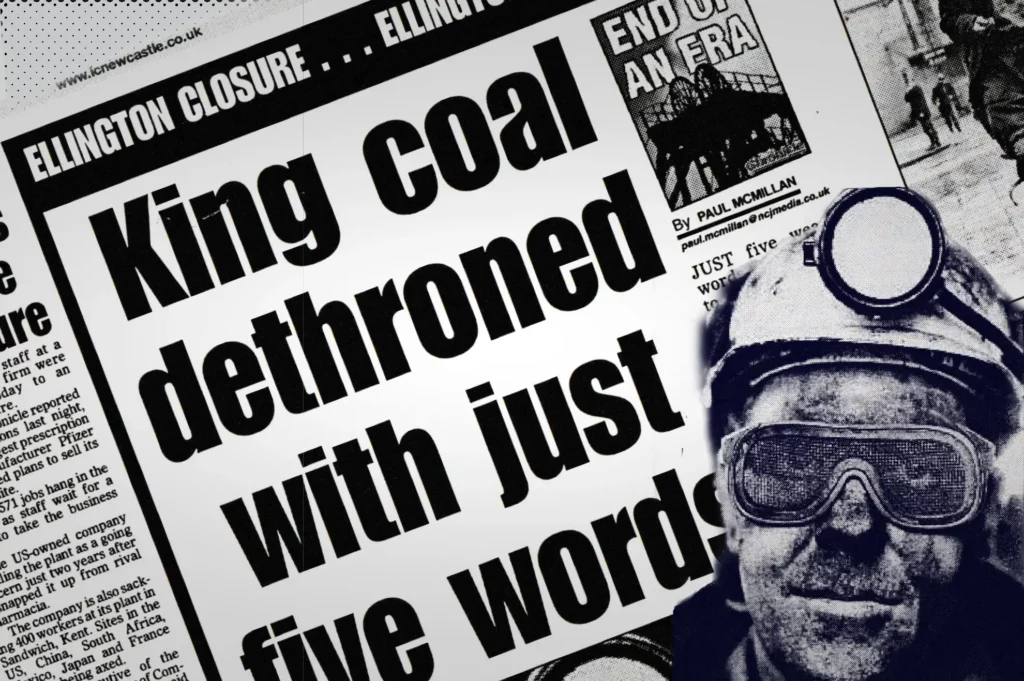Just five weasel words were needed to end centuries of our industrial heritage.
“Gentlemen the pit is closed” were the words from Ellington axeman Gerry Spindler.
What it meant was the Big E, the last superpit in a once proud industry battered by unrest, was closing.
Opened in 1909 as part of the Ashington Coal Company, its workforce soared from less than 800 at the outbreak of the First World War to 1,200 in 1921 and to an all-time high of 2,179 at the time of the 1984 strike.
In 1983 the pit set a record producing 1m tonnes of coal in 29 weeks.
From employing more than 2,100 men in the 1980s, the announcement has left the region’s 340 remaining miners out of work and the surrounding community stunned.
Once there were 200 pits across the Northumberland and Durham Coalfields and at the end of the Second World War there were 148,000 men employed in the mines.
It was North East coal which fuelled the industrial revolution and the heavy industries that sprang up across the region.
Local historian Neil Taylor worked at Ellington Colliery for 20 years, following in the footsteps of his father William, in the early 1920s, and grandfather, also called William, who was there at the beginning.
He has written four books on the social history of mining around Ellington.
The 64-year-old, who lives in the shadow of the pit, said: “It’s extremely sad when you consider the villages around here were built on mining.”
It was not until around the modernisation of the pits in the 1950s and neighbouring Lynemouth Colliery forced to close a decade later, that Ellington’s humble colliery was transformed into a superpit which became known Big E in the 1980s.
Neil said: “It was because of the fact that Lynemouth had closed because of a fire in 1966, they had also discovered a new drift.
“When they accessed the coal seams Ellington and Lynemouth started to be combined. Lots of Lynemouth men transferred to Ellington.
“The modernisation process had also started in the 1950s, that’s when the coal board had decided to modernise all the pits in this area. Ellington became the lifeblood.”
Until the arrival of the Alcan Power Station in the early 1970s, Ellington remained the area’s only large employer.
The men at the pit helped to produce almost 12,000 tonnes of coal a week, most of which was used by the power station.
But the pit was to be hit by the often bloody miner’s strike of the mid 1980s which infamously saw violence flare between pickets and police.
Although the North East coalfields had been devastated by closures 17 pits still remained when the miners and Margaret Thatcher went to war.
Shortly before the strike broke out Ellington hit the headlines when National Coal Board chairman Ian MacGregor visited the colliery shortly after announcing 20 pit closures.
An angry mob charged towards him and cameras captured the moment the man dubbed Thatcher’s hatchet man was knocked to the ground.
Neil added: “There was quite a lot of hardship and understandably, because people were not being paid. All they were getting was the strike fund.
“There were actually cases within the village of people left without any light or heating. They were hard times, just like any strike.”
The NCB, renamed British Coal in 1986, closed Ellington for the first time in February 1994. It was bought and re-opened two months later by RJB Mining.
Then, in November 1999 another crisis loomed as RJB announced it was to close because geological problems.
But after a campaign, the company pledged to keep the pit open for another four or five years in a deal which saw the Government supply 110m rescue package for the industry.
Five years ago, the pit changed hands again and became part of UK Coal. But last year it’s future looked doubtful again when it suffered a loss of 11m.
Neil said: “It was sunk in 1909, and is the last deep mine in the area, I will be sad to see it go.”
